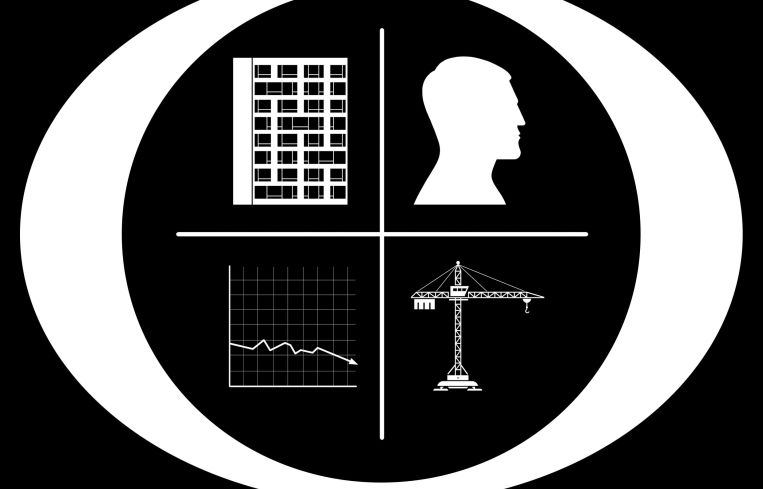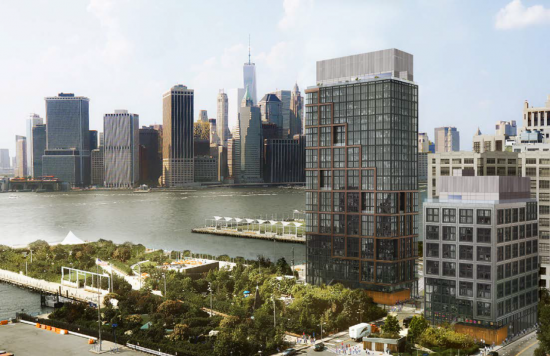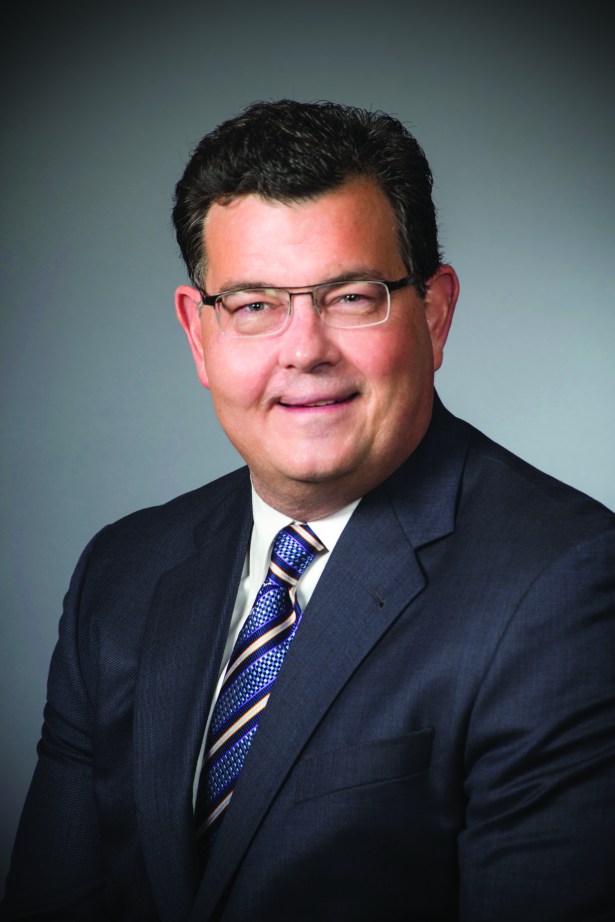Bank OZK’s Stock Took a Hit. Can Its Risky Business Still Pay Off?
By Cathy Cunningham and Matt Grossman November 27, 2018 9:00 am
reprints
Well, it finally happened. Bank OZK, the lender that had built its lending book and reputation as a nonrecourse construction lender, stumbled.
Its stock saw its most serious drop to date in October, after a third-quarter earnings release announced reduced income and losses on two of the bank’s vintage development loans. And for some who had watched the Little Rock, Ark.-based lender take down colossal construction loans that few other banks would dare to, it seemed like a long time coming. For others, the market overreacted.
One detractor Commercial Observer spoke with said that at times during its rise in the 2010s, he witnessed Bank OZK—which was known until last summer as Bank of the Ozarks—doing loans that no other financier would touch.
“I’d never have believed they would be willing to do it,” he said of one development loan for a Florida resort he worked on. He also took a dim view of the bank’s former chief lending officer, Dan Thomas—whose departure in 2017 the bank still hasn’t fully explained—saying he was “addicted to all of the fees and the large margins” on the bank’s construction loans. (Dan Thomas declined to be interviewed for this article.)
When the earnings report hit the wires, the two sunken loans in the Carolinas drew particular ire from Ozarks watchers.
One construction lender who competes with Bank OZK called the market reaction “largely unfair and unwarranted” but also chided the bank a little: “Why the hell they still have those two loans on their books from the last cycle and hadn’t marked them, I don’t know. Don’t kick the can down the road.”
But were those two loans—totaling only $46 million out of the bank’s roughly $9 billion construction and development portfolio—really the reason for the stock’s precipitous fall? Or does the bank have a broader perception problem on its hands?
Its reputation for derring-do divides the industry into those skeptical of the bank’s judgement and those who credit it with the courage and know-how to take down mammoth construction loans without fear of being trampled.
Simply put, “Anything being built. That’s what they’re good at,” said one financial adviser, who wished to remain anonymous.
Stretching the credit window
The bank’s business model has translated into success that’s clear to see in its origination volumes. Last year, it produced $10.5 billion in loans, compared with $8.24 billion in 2016 and $5.63 billion in 2015.
But this fall, months after rebranding as Bank OZK, the 115-year-old institution— purchased by George Gleason in 1979—had to write down two troubled loans. Shares dropped by almost a quarter, as investors scrambled to read whether they were seeing a momentary stumble or an existential threat to the bank’s modus operandi.
“Theirs is a very aggressive national origination model,” said banking expert Chris Whalen, who runs the Institutional Risk Analyst website. “That’s why people pay attention.”
But aggressiveness aside, Whalen said, until October, the bank’s credit performance had been nearly faultless.
“They only get the reputation of being aggressive because they do really large construction loans on a nonrecourse basis,” said the construction lending executive , who competes with Bank OZK . “Yes, relative to the size of the institution [$22 billion] their loans are very large. But they’re also very well structured, and their underwriting is sound.”
The bank hasn’t been shy about doubling down on its credit judgment, taking on massive lending opportunities. In October, for instance, Bank OZK made a $558 million construction loan to the Aventura, Fla.-based Trump Group (no relation to the U.S. president or his family) for a South Florida condominium project.
“If something goes wrong with a loan of that size, it has a major impact on your balance sheet. If regulators make you downgrade a loan of that magnitude, that’s a bad day for their stock,” the lender said. “They’re not going to lose a penny [in that deal], but the risk in all construction deals—for all of us, not just them—is that they don’t perform according to the underwriting.”
The bank has grown its geographic footprint: In addition to its native Southeast, its loan book is bursting its bindings in South Florida and in New York City. In April, it led the $411 million financing of the Pier 6 luxury residential development in Brooklyn, contributing a $251 million construction loan underneath a $160 million junior equity contribution from another undisclosed lender.

Closer to its home the lender teamed up with Square Mile Capital Management in Dallas to produce a $118 million refinance on a transitional office building that was awaiting the start of a major new tenant’s occupancy. And as the Florida Trump Group deal exemplifies Bank OZK has been by far the most important lender behind the current condo boom in Miami; The Real Deal calculated that the bank has originated 26.5 percent of the construction debt fueling that market since 2013 and putting a total of $1.17 billion into the market over the last five years.
Its role is notable because construction lending is a business that has become anything but conventional for fiduciary institutions. Ten years after the financial crisis, some bank lenders continue to steer clear of providing debt on construction work, due to its inherent risk. For one thing, tough regulations imposed by Congress, the Federal Reserve and the Federal Deposit Insurance Corporation (FDIC) have required banks to hold higher levels of reserves against loans the government considered risky, such as most that back construction projects. Those rules, known as HVCRE (for high-volatility commercial real estate), have encouraged many commercial banks to stay on the sidelines, an urge reinforced by higher regulatory scrutiny in general. (Bank OZK’s principal regulator is the FDIC, but unlike most banks it isn’t overseen by the Fed).
What’s more, banks have sore memories of being badly burned by free-spirited loans they’d made during the mid-2000s. “During the housing boom, banks were a lot less likely to request an audited financial statement from developers, builders and others in the industry,” Andrew Sutherland, a professor at Massachusetts Institute of Technology’s Sloan School of Management, observed in research published last year. “When times are good, banks have a tendency to reduce their standards, and keep expanding their loan portfolio with the expectation that they are going to be repaid.”
The backlash to that approach has left a formidable void in the market during the current expansion cycle—a vacuum Bank OZK has helped to fill.
Thomas, a trained lawyer and accountant who eventually became the bank’s chief lending officer, founded its Real Estate Specialities Group (RESG) in 2003, which powered the bank’s explosion onto the construction lending scene. Its assets multiplied from $3 billion in 2010 to $22 billion this year, with debt originated by the RESG responsible for more than half the bank’s loans. (Rapid horizontal growth has contributed as well; during the same period, the bank acquired 15 regional competitors.)

That positioning has boosted the bank’s esteem among development firms, who say they value the bank as an increasingly rare species of lender. Thomas has since resurfaced as president of Plano, Texas-based developer Landplan Development.
“I think [among] banks, they’re still pre-eminent” for construction lending, said DelShah Capital Founder Michael Shah, who has borrowed from the bank, most notably, on funding multifamily projects in Manhattan’s Morningside Heights neighborhood. “[OZK] is definitely one of the go-tos.”
A divisive institution
The key differentiator that sets the bank apart from its debt-fund competitors has been the cheaper capital costs that go hand-in-hand with institutional lending. But Shah explained that in his view, Bank OZK also has enough real estate know-how to be a helpful and unobtrusive partner.
“They’re pretty easy to work with,” Shah said. “They understand the business model and try to work with you on the terms to get you there.”
Adam Hakim, a senior managing director at Meridian Capital Group, concurred with Shah on the bank’s borrower-friendly mien.
“Their borrowers are consistently impressed with the post-closing performance of the bank,” Hakim said. “This includes things like the draw process, which is handled by an experienced real estate team that truly understands how development deals work.”
Those crowd-pleasing touches, along with its risk tolerance and its willingness to take on nonrecourse projects, marked out a specific niche that allows Bank OZK to be paid a premium over what traditional large commercial banks receive.
“They’ve found a specific spot on the risk-return matrix. Their model is a little higher risk [and] higher return than some—such as a J.P. Morgan Chase or a Wells Fargo—and a little lower risk-lower return than others, such as Children’s Investment Fund,” one financial intermediary said. “Very few banks play in that space, so it’s a nice niche where a lot of borrowers are happy to borrow from them and pay their higher rate because it’s not too high of a rate; it’s appropriate. Plus, they’re nonrecourse.”
Several naysayers expected the bank’s appetite for construction lending to bite them in the derriere at some point and the bank’s popularity as a source of development funding made its lackluster third-quarter earnings report, which hit on Oct. 18, land with an especially pronounced impact.
Gleason admitted that the report “did not meet our usual high standards for performance.” On the heels of the release, the company’s stock immediately dropped by more than 22 percent on the Nasdaq and has since fallen farther yet, trading last week between $25.40 and $27.30, down from a high on Sept. 20 of $40.34.
Most press coverage surrounding the drop has focused on a pair of vintage RESG loans that have gone the rails: an otherwise unconnected duo of construction loans in South Carolina and North Carolina that the bank originated in 2007 and 2008.
The pair of Carolinas’ loans first raised concerns for the bank last year, when they were added to public tallies of debt the bank considered substandard. That triggered requirements for the bank to set aside reserves against the assets, which it did by designating $19 million for that purpose.
“The Carolinas were a complete killing field when it came to this small commercial stuff—especially the farther you got away from [those states’] major cities,” Whalen remarked. Citing a research report from Kroll Bond Rating Agency, which argued that the two troubled loans were outliers on Bank OZK’s balance sheet, Whalen said he wasn’t overly concerned they represented broader credit risks for the bank.
Even the construction lender who competes with Bank OZK said that the recent negative press that has surrounded the two loans is unfair, given that the loans were made over 10 years ago, and don’t represent Bank OZK’s business model today. “It was a ridiculous overreaction and not reflective of what they’re doing today, at all,” he said.
A senior commercial real estate lending executive who transacts with Bank OZK vociferously agreed. “I read every word of their earnings call transcript, and I thought they did a good job of showing that the two loans that went bad were inconsequential, not systemic, and don’t have any implications for the rest of their book.”
A mezzanine lender agreed that the two loans are a drop in the ocean, but also said, “It doesn’t matter how old the loans are. Losses are losses and the moment that losses are recognized, that’s perceived as weakness.”
Signs of strife?
Broader shortfalls in the bank’s performance have also been noted. Net income from July through September was $74.2 million, down nearly a quarter from the same period last year.
And despite slightly higher interest rates, the bank’s ability to generate returns suffered, too. The bank’s return on average assets in the third quarter was 1.33 percent, nearly a third lower than in 2017.
But one headwind against the bank seems unlikely to translate into long-term trouble. Whalen noted that some of the bank’s biggest expenses in the third quarter were one-time costs related to the recent name change—a decision that was made to give the bank a more national persona—and its associated outlays, certain to disappear from the earnings report in the fourth quarter.
Despite the recent trouble, the senior lending executive likewise sees little but upside in the bank’s preferred style of delivering loans.
“I think they have a great business model,” the executive said. “They’re in a really smart piece of the capital stack that is in demand and they can get paid for, writing very low loan-to-cost senior debt with very strong B-note holders behind them who are capable of finishing a job if something unforeseen happens.”
“Their thesis is fairly straightforward. They built their book lending to top-quality sponsors at leverage points generally below 60 percent,” Hakim noted. “Most of their loans have been 50 to 55 percent loan-to-cost and they will move on both pricing and leverage to win a deal that they feel they should win.”
“Hedge funds have made them a popular short, and the poster child of excessive commercial real estate lending, but they are taking the smartest risk-reward piece of the stack and getting paid for it. I think the shorts will be proven wrong over time,” the finance executive added.
But while today there is a sea of competition from myriad lenders, when Bank OZK was gaining its footing during the early 2010s, it was one of the few firms in the game.
“Buying assets is 75 percent determined by your cost of capital and the flexibility of that capital,” said one capital markets executive who’s transacted with Bank OZK as a mezzanine lender and a borrower for more than a decade. “The lender is the most important cog in the wheel. Once we hit 2008 and 2009 we were in a liquidity crisis that then created a recession in 2010 and 2011. They were doing the most riskless deals and they were getting paid very well to do them, because very few people were willing to stand up and write construction loans at that time; their mere presence allowed them to book extraordinarily safe tickets with the very best borrowers on the planet, at premiums.”
Hakim said, “At first there was very limited competition in the bank space for the loan size and pricing combination that they offered, which is part of the reason they were able to expand so quickly. Currently there are four to five similar-type lenders who can quote the size deals that the bank can. Competition from debt funds is less likely as the debt funds tend to be more expensive in terms of pricing and often win deals by pushing leverage well beyond where the bank would be comfortable.”
One source CO spoke with said that the debt funds that are lending on construction projects frequently bring Bank OZK into the capital stack, selling them the A-note and remaining in the mezz position. The debt funds are therefore in the first loss position, leaving the bank in a relatively safe spot.
That’s not to say that everyone in the industry holds the bank’s credit judgment in high esteem.
The only willing lender
The Margaritaville Beach Resort in Hollywood, Fla., is one example of a debt deal done by Bank OZK that surprised even some transaction parties. One of them—who wished to remain anonymous—told Commercial Observer that the lender was the only capital source willing to make the bet on the Jimmy Buffett-themed resort. Bank OZK lent $35.6 million in 2013 before upping the debt to $54.6 million in 2015—only 37 percent of the $147 million project cost. “The loan had equity behind it, but it was made to an untested developer [Lon Tabatchnick and Lojeta Millenium] which was very risky,” he said. “They got comfortable with it, but I don’t know how.”
Denver-based private equity firm KSL Capital Partners purchased Margaritaville in 2018 for $190 million, so not a bad bet after all.
“Bank OZK likes being contrarian so it was hard to tell exactly what the motivation was [at the time of the deal],” the source continued. “But we gave Dan Thomas our assets that we couldn’t place with other people.”
Whether that attitude persists at Bank OZK today is hard to assess, although the construction-lending competitor said that the bank is arguably as active as it ever was. “We have taken some deals from them, but they are a much larger-volume lender than we are and will continue to be.”
Still, some changes are definitely afoot in Little Rock.
In addition to Thomas’ departure last year, another sign of a potential new approach for the bank is that its institutional acquisitions have slowed dramatically, refraining from purchasing any other financial institutions since 2016.
During the financial crisis, the bank reported “returns on average assets of at least 1.2 percent per year, strong margins, relatively low levels of nonperforming assets, manageable charge-off levels, and solid capital levels,” according to KBRA’s most recent assessment of the bank that it had published over the summer.
Further to the bank’s credit, KBRA noted that it hasn’t traditionally relied on raising deposits—even though it runs more than 250 local offices. In a pinch, the rating agency contended, Bank OZK could ramp up its efforts to win deposits if its reserve requirements grow.
Still, the bank’s model is such an outlier that those who transact with it admit that it’s not merely playing for low-stakes pots.
“We saw what happened with Ozarks on these two very small loans. Imagine if they had a $300 million construction loan they had to downgrade; the market would treat them very unfavorably,” the construction lender said. “I don’t think they’re ever going to lose a penny on one of their loans as their business model is so sound—unless of course there’s a larger unseen economic event.”



